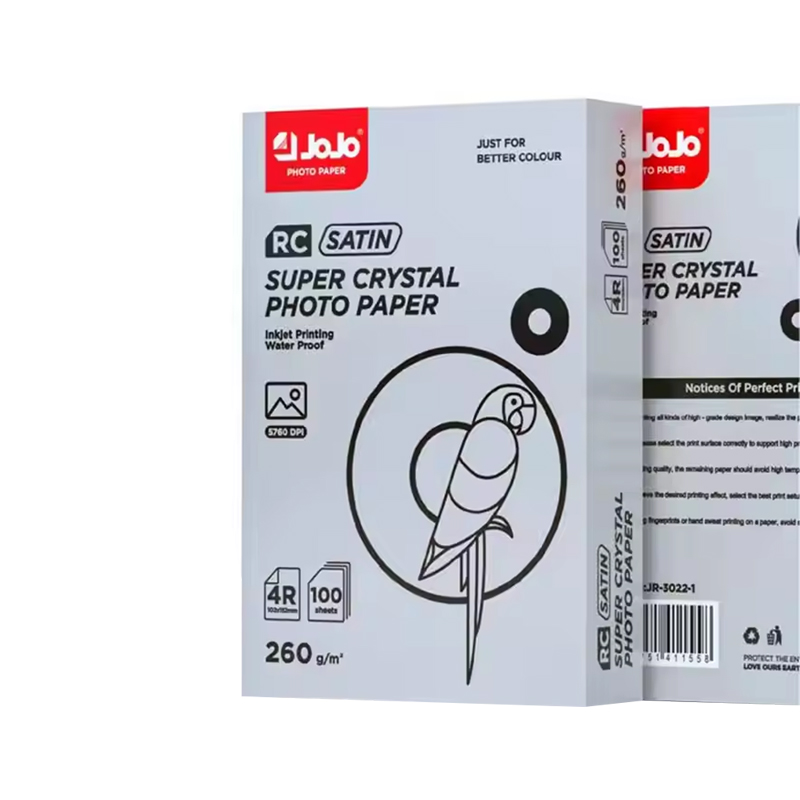If you need any help, please feel free to contact us
The Rise Of Double-Sided Photo Papers In Digital Printing
Three commonly used weights for double-sided photo papers are 150gsm photo paper, 180gsm glossy photo paper, and 230gsm photo paper. Each of these offers unique benefits depending on the end-use application.

150gsm Photo Paper: Lightweight and Versatile
The 150gsm photo paper is often favored for everyday printing tasks that require decent thickness without bulk. Its relatively light weight makes it suitable for flyers, multi-page booklets, and image-rich documents that need to remain flexible and easy to handle. Despite its lower weight, this paper type still provides good ink absorption and a smooth finish that enhances printed visuals.
This paper is frequently used in educational and promotional materials where double-sided printing adds functionality without significantly increasing material cost or bulk. Additionally, it's easier to fold or bind, making it a common choice for digital photo book printing and layered visual presentations.
180gsm Glossy Photo Paper: Balanced and Professional
Sitting in the mid-range, the 180gsm glossy photo paper is a popular choice for users looking for both durability and a glossy appearance. The glossy coating on both sides enhances color depth and provides a shiny finish, making images appear more vivid and crisp. This is especially useful in marketing prints, photo calendars, and professional portfolios.
The double-sided glossy finish gives printed materials a polished appearance without adding excessive weight. It also allows for creative designs, such as full-page prints on each side of a folded card or pamphlet, that require high visual impact. Although it is slightly thicker than 150gsm paper, it remains flexible enough for more desktop printers and standard binding equipment.
230gsm Photo Paper: Sturdy and Impactful
At the heavier end of the spectrum, 230gsm photo paper is well-suited for projects that demand sturdiness and a premium feel. This weight category is often used for high-quality photo prints, event invitations, and presentation materials that need to withstand frequent handling.
While heavier paper tends to be more rigid, it also supports high saturation without warping or curling, especially important in double-sided printing. The added thickness helps to eliminate show-through, ensuring that both sides of the paper maintain their visual clarity. For high-definition photography prints or designs that span both sides of a sheet, this weight offers a reliable base that holds ink well and feels substantial in hand.
Applications and Market Trends
The shift toward double-sided photo papers is partly driven by sustainability concerns, as printing on both sides reduces paper consumption. Businesses and individuals alike are seeking efficient printing methods that combine quality with environmental responsibility. The rise of compact photo printers for home and small business use has also contributed to the popularity of double-sided formats, making it easier to produce professional-looking output without outsourcing.
Furthermore, advancements in inkjet printer technology have improved compatibility with heavier and coated media. This development has widened the scope of applications for double-sided photo papers, from personalized packaging inserts to digital scrapbooking and fine art reproductions.
Double-sided photo papers are no longer limited to niche printing projects. With a variety of paper weights available, including 150gsm photo paper, 180gsm glossy photo paper, and 230gsm photo paper, users have the flexibility to choose the right material for their needs. As demand for high-quality, space-saving, and dual-purpose print media continues to grow, double-sided photo paper stands as a practical solution for modern digital printing environments.

 English
English Español
Español 中文简体
中文简体 Português
Português

